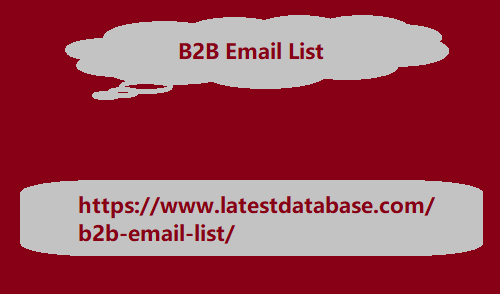M-commerce: shopping with a smartphone in hand
Jan 22, 2024 20:03:55 GMT -8
Post by account_disabled on Jan 22, 2024 20:03:55 GMT -8
Recently, an interesting trend has been observed in the m-commerce field. Shopping apps have become the norm. Now the question is not whether the store has such an application, what is important is how much it supports the buyer through this application. The focus has shifted from attracting customers (although this is undoubtedly important) to providing them with a unique in-app shopping experience. And for this there are a number of solutions that are worth considering. Experts predict that sales through mobile devices will be 44.7 percent. Total eCommerce sales in the US in 2019 compared to 39.6 percent in 2018. This means that consumers in the global benchmark US market are increasingly looking to choose mobile devices as their online shopping tool. The trend towards choosing mobile commerce, one way or another, forces online stores to take into account several important factors. First, let's note that both browsers and applications are used for online shopping, and each option satisfies specific needs. When it comes to shopping on a smartphone, it can be said that the browser is mainly used to search for information.
In turn, mobile applications, although they have an informative function, bring the user closer to the actual purchase. m-commerce: shopping with a smartphone in hand Features of in-browser shopping Features of purchases in mobile applications: Buyers search for the most suitable products or services, which means they increase their knowledge about the product and use ratings and tips. For example, a customer may not know a specific model of headphones or even a brand, but by typing the phrase “best headphones” he will imm B2B Email List ediately see a number of offers. Users check promotions and latest offers. Some discounts may only be available from mobile apps, and the app makes it easier to browse products, allowing you to display, for example, only the latest collections or only discounted items. Users rely on ratings and opinions of other users. Consequently, many stores and independent sites offer the opportunity to rate a product with points or stars, as well as post your own opinion. Users expect personalized recommendations. The application collects data about the user, which means it can provide personalized offers. Ratings and opinions apply not only to products, but also to stores, and the average rating (for example, in Google search) is an important element of a company's image.

A wish list allows the user to easily view products of interest and compare items of the same type. Browsers and mobile apps complement each other in the purchasing process - the transaction is completed primarily through apps. More and more online stores are convinced that applications help attract customers and also build relationships with them. Leading brands have been developing apps for their stores for years, and now investing in mobile commerce is an important step to avoid being left behind. Here are some examples of solutions that have become standard in mobile commerce: Simple search . The ability to enter text alone is not enough - voice search, popularized by Google, has also spread to the commerce sphere, and a modern mobile application should include this capability. This also includes filters to narrow the search. Push notifications . This solution significantly increases user engagement: guiding him through subsequent stages of shopping, providing necessary information or reminding him of the items in the cart.
In turn, mobile applications, although they have an informative function, bring the user closer to the actual purchase. m-commerce: shopping with a smartphone in hand Features of in-browser shopping Features of purchases in mobile applications: Buyers search for the most suitable products or services, which means they increase their knowledge about the product and use ratings and tips. For example, a customer may not know a specific model of headphones or even a brand, but by typing the phrase “best headphones” he will imm B2B Email List ediately see a number of offers. Users check promotions and latest offers. Some discounts may only be available from mobile apps, and the app makes it easier to browse products, allowing you to display, for example, only the latest collections or only discounted items. Users rely on ratings and opinions of other users. Consequently, many stores and independent sites offer the opportunity to rate a product with points or stars, as well as post your own opinion. Users expect personalized recommendations. The application collects data about the user, which means it can provide personalized offers. Ratings and opinions apply not only to products, but also to stores, and the average rating (for example, in Google search) is an important element of a company's image.

A wish list allows the user to easily view products of interest and compare items of the same type. Browsers and mobile apps complement each other in the purchasing process - the transaction is completed primarily through apps. More and more online stores are convinced that applications help attract customers and also build relationships with them. Leading brands have been developing apps for their stores for years, and now investing in mobile commerce is an important step to avoid being left behind. Here are some examples of solutions that have become standard in mobile commerce: Simple search . The ability to enter text alone is not enough - voice search, popularized by Google, has also spread to the commerce sphere, and a modern mobile application should include this capability. This also includes filters to narrow the search. Push notifications . This solution significantly increases user engagement: guiding him through subsequent stages of shopping, providing necessary information or reminding him of the items in the cart.